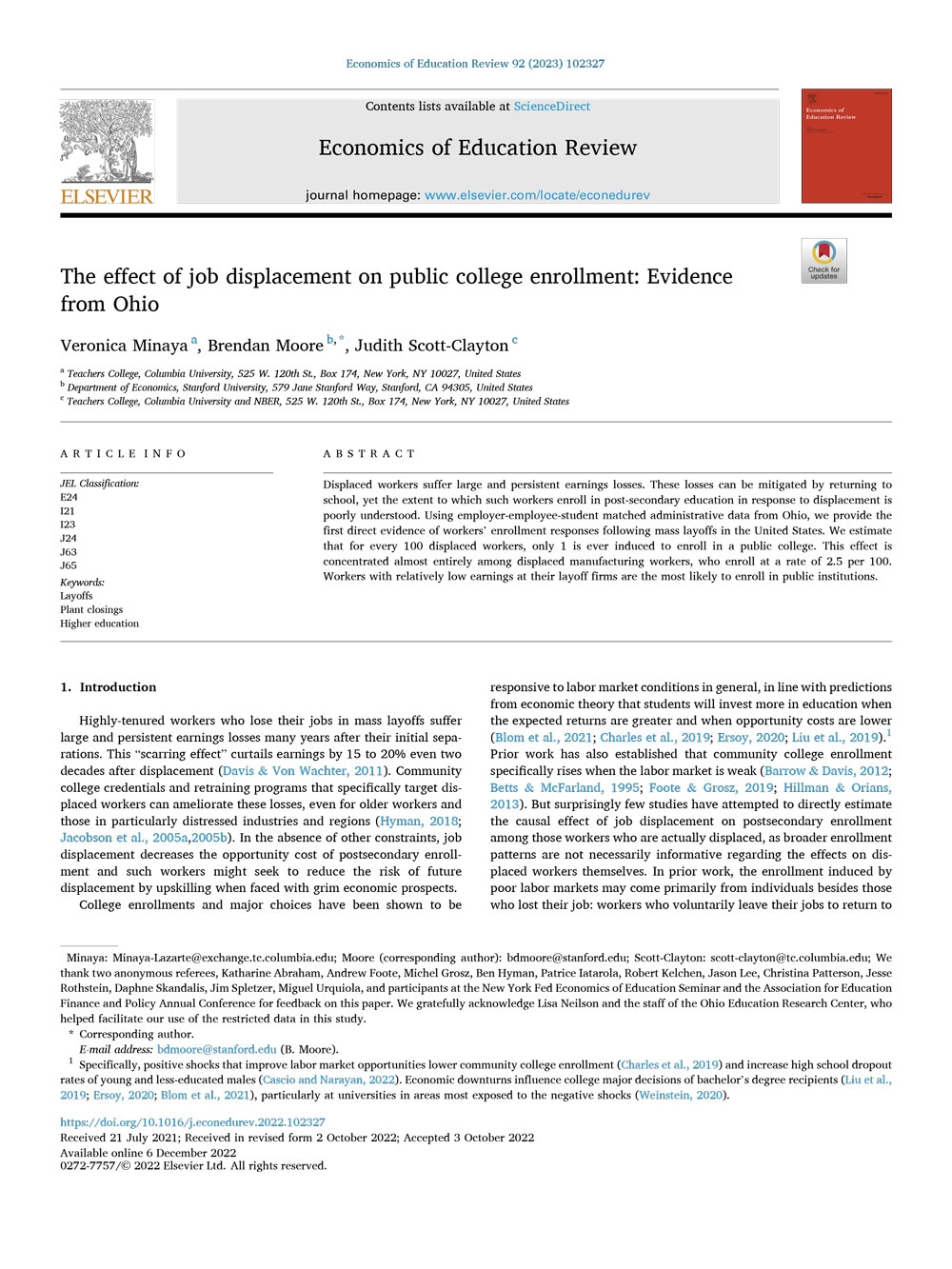
Displaced workers suffer large and persistent earnings losses. These losses can be mitigated by returning to school, yet the extent to which such workers enroll in postsecondary education in response to displacement is poorly understood.
Using employer-employee-student matched administrative data from Ohio, this paper provides the first direct evidence of workers’ enrollment responses following mass layoffs in the United States. Close to 10% of these displaced workers enroll in public two- or four-year colleges after displacement, with the typical enrollment persisting for five semesters and 29% completing a degree. However, much of this enrollment may have occurred regardless of displacement.
To estimate a causal effect, the authors compare displaced workers over time to similar nondisplaced workers. They estimate that for every 100 displaced workers, only about 1 is ever induced to enroll in a public college as a result. This effect is concentrated almost entirely among displaced manufacturing workers, who enroll at a rate of 2.5 for every 100. Such workers with lower within-firm earnings and from local labor markets with limited for-profit options are the most likely to enroll in public institutions.
A version of this paper appears in Economics of Education Review.
